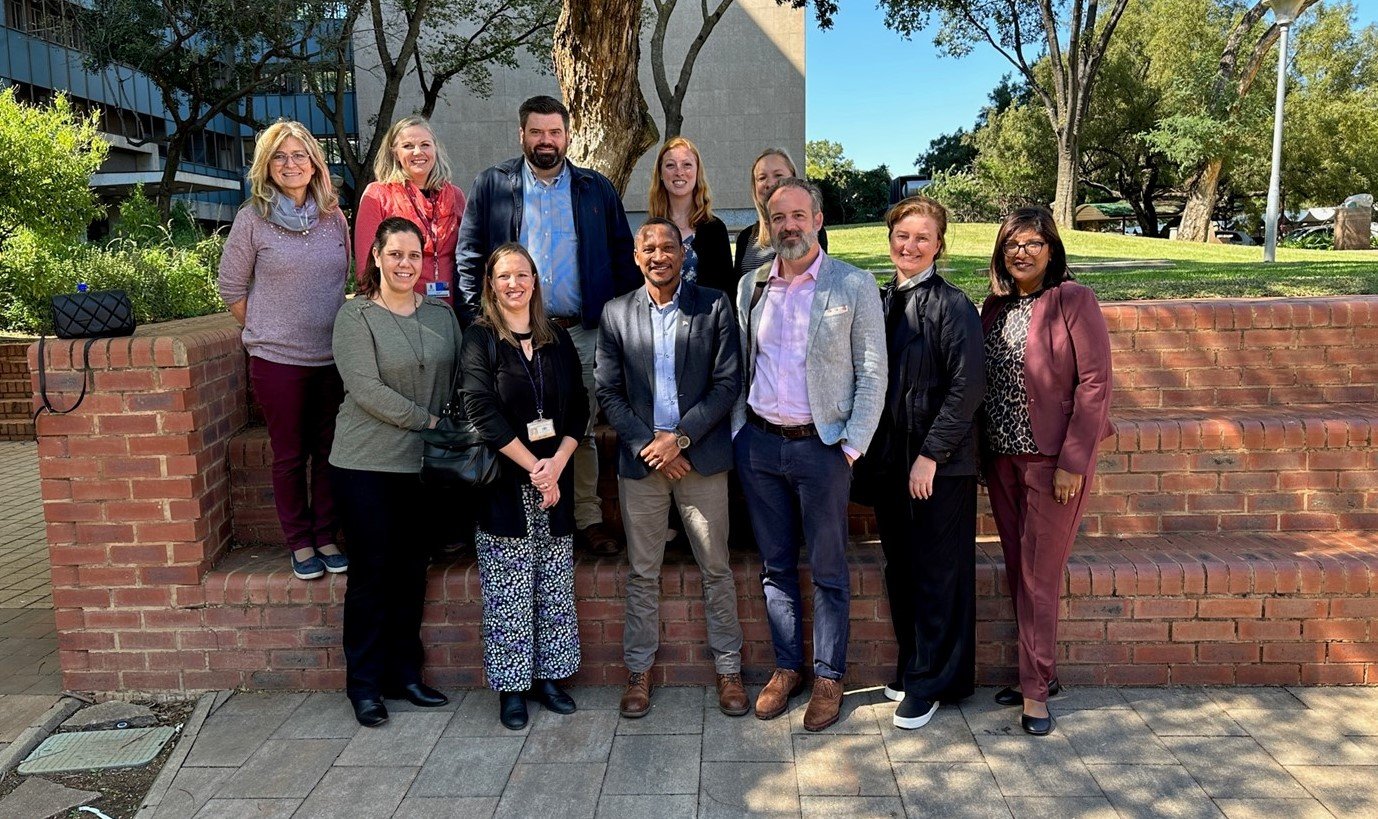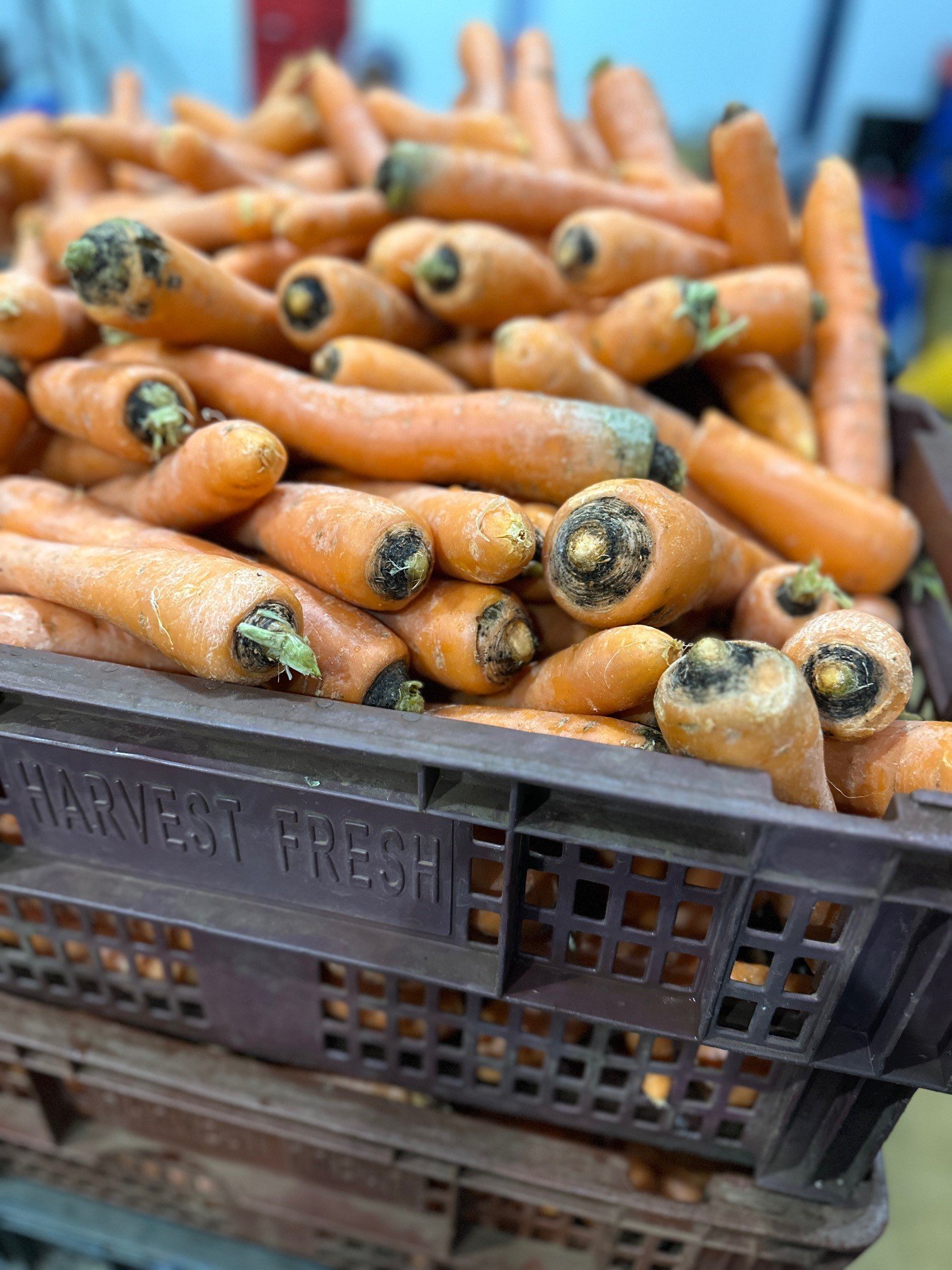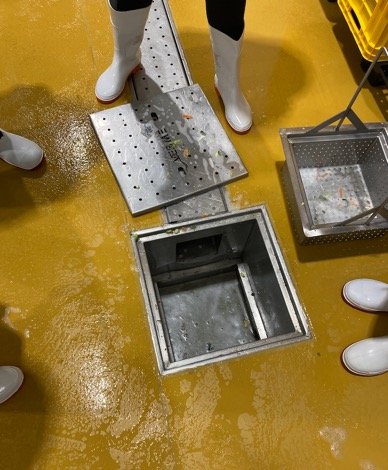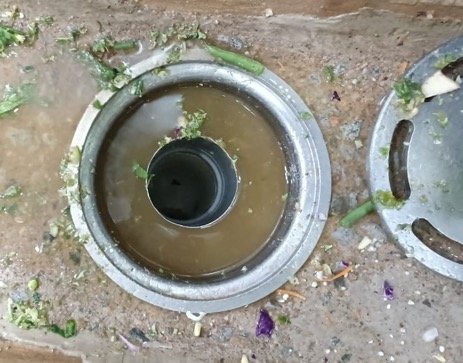|
COVID-19 (2022 Deadline)
Impact of COVID-related disinfectants in the food processing sector on the downstream impact of antimicrobial resistant pathogens and endocrine disrupting chemicals into wastewater systems
PI: Lise Korsten (lise.korsten@up.ac.za), University of Pretoria, South Africa
U.S. Partner: Charles Gerba, University of Arizona (funded by United States Department of Agriculture/ National Institute of Food and Agriculture)
Project Dates: November 2022 - March 2024
Project Overview
 | | USAID and NAS representatives visit Prof. Korsten and her team at the University of Pretoria, May 2023 |
Since the onset of the COVID-19 pandemic, the food-processing sector has been under enormous pressure to ensure that processing facilities and food handlers do not contribute to the spread of the virus. Good hygienic practices that involve washing, rinsing, cleaning, and disinfecting were amongst the areas that received special attention. To date, most disinfectant-related research studies have focused on the efficacy of disinfectants in deactivating pathogens, often without consideration for their downstream impact on the environment and public health.
Quaternary ammonium compounds and chlorine-based disinfectants are used routinely as disinfectants in food production facilities. Due to varying resistance to disinfectants, some antimicrobial resistant bacteria can survive disinfection and release free-living DNA in wastewater treatment plants through the sewer lines of food processing facilities. Residual disinfectants and soaps and their degradation products can end up in the environment through wastewater treatment plants, and their endocrine disruptive mechanisms as well as their genotoxic and teratogenic properties to mammals and aquatic organisms raise considerable concern.
This PEER project sought to assess the contribution of food safety control practices and COVID-19 hygiene measures to the downstream quality of non-sewage wastewater from a food processing facility. The project monitored the wastewater discharge from a previously sampled processing facility for the release of targeted microorganisms and chemicals. The selected study site was a food-safety-compliant fresh cut vegetable processing facility, where multidrug resistance human pathogenic E. coli will be isolated by the project team.
Final Summary of Project Activities
The researchers sampled seven different water sources in the facility to determine the presence of foodborne pathogens (E. coli, Listeria monocytogenes, and Salmonella spp.) and detect the prevalence of a microorganism indicator, E. coli, that produces a specific resistance mechanism conferring resistance to third-generation cephalosporins (ESBL), in a food processing environment.
They shared reports of their findings from all four sampling trips with the Technical and Environmental Manager and the Food Safety Manager of the processing facility, serving as a guide on levels of risk in the facility, informing them of the success of their current hygiene regime, and highlighting where improvement is needed. The researchers characterized a selection of microorganisms obtained during the four sampling visits using Whole Genome Sequencing (WGS) technology. As of June 2024, papers on the microbiological sampling were forthcoming, and a research fellow was expected to present findings at the International Association for Food Production's (IAFP) annual conference in Long Beach, California, in July 2024.
The PEER team also measured endocrine disrupting activity and chemical screening (including pesticides, disinfectants, and their by-products) of six sampling points in the processing facility, assessing and quantifying estrogenic and androgenic activity in the water samples from the facility.
The researchers replaced a plan for a desktop review with a paper on antibiotic profiles of some pathogens that are the leading cause of nosocomial infections throughout the world, as an unexpected number of these potentially pathogenic microorganisms were found in the study.
The PEER team held two online workshops alongside the U.S. partner’s food safety experts. In partnership with the University of Pretoria’s Drama Department (School of Arts), information about food safety practices in the informal market was presented to factory workers at the sampling site in the form of an interactive play that addressed topics on food safety practices in the informal food sector.
The PI and her team are part of projects that received more than $6 million in additional funding in total across six new grants, including a major grant from the European Union Horizon program. Knowledge generated during the course of the project will also contribute to the international Global Water Research Coalition project to develop an effect-based monitoring tool for water quality safety in line with World Health Organization recommendations. Data from these projects may ultimately be used to inform policy. The Whole Genome Sequencing results for the bacteria that were selected in this study were published on the NCBI’s data website.
Publications
Richter, L., E.M. Du Plessis, S. Duvenage, and L. Korsten. 2023. Prevalence of extended-spectrum β- lactamase producing Enterobacterales in Africa's water-plant-food interface: A meta-analysis (2010–2022). Frontiers in Sustainable Food Systems 7:1106082. https://doi.org/10.3389/fsufs.2023.1106082
Iwu, C. D., N. Nontongana, C.U. Iwu-Jaja, B.O. Anyanwu, E. Du Plessis, L. Korsten, and A.I. Okoh. 2023. Spatial diarrheal disease risks and antibiogram diversity of diarrheagenic Escherichia coli in selected access points of the Buffalo River, South Africa. PLoS ONE 18(8): e0288809. https://doi.org/10.1371/journal.pone.0288809
 |  |  | | Vegetables in line to be processed at the food processing facility. The PEER team analyzed water runoff samples at this food processing facility as part of this study. | Wastewater discharge at the food processing facility | Water discharge sampling points |
Back to PEER COVID-19 Grant Recipients
|
|
|
|







